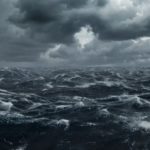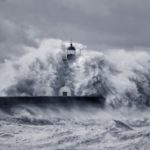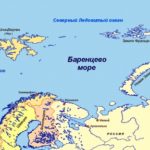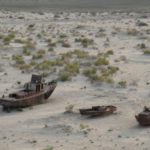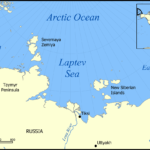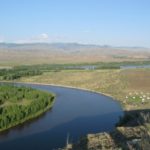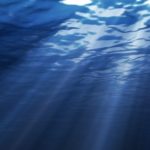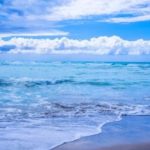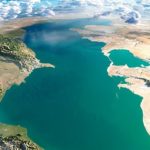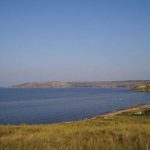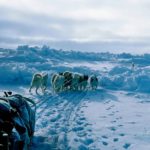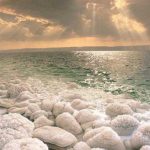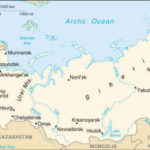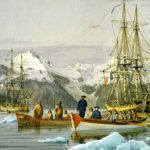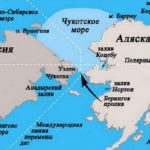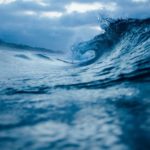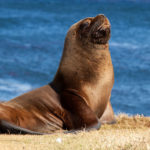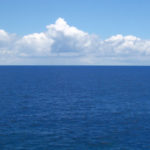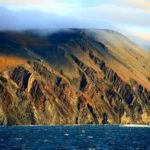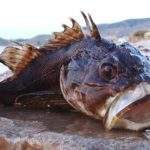Kara Sea
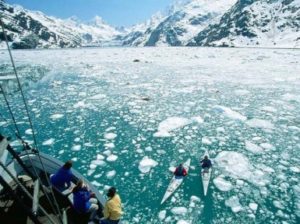 The Kara Sea is one of several seas included in the Siberian Arctic group. Due to geographical features, it belongs to the continental type of the marginal seas of the Arctic Ocean. The Kara Sea is considered one of the largest in the Russian Federation – its area is about 883 thousand kilometers, and the volume of water is about 98 thousand cubic kilometers. They say that it was the Kara Sea that served as the prototype for “The Tale of Tsar Saltan.”
The Kara Sea is one of several seas included in the Siberian Arctic group. Due to geographical features, it belongs to the continental type of the marginal seas of the Arctic Ocean. The Kara Sea is considered one of the largest in the Russian Federation – its area is about 883 thousand kilometers, and the volume of water is about 98 thousand cubic kilometers. They say that it was the Kara Sea that served as the prototype for “The Tale of Tsar Saltan.”
The Kara Sea is located between the islands of Novaya Zemlya, Franz Josef Land and Severnaya Zemlya. It is considered to be the marginal sea of the Arctic Ocean and is part of the Northern Sea Route. It communicates with the neighboring Barents Sea on the east side, through the Karskie Vorota and Matochkin Shar straits, and on the west side, through the Laptev Sea of Vilkitsky Straits and the straits between the islands of Severnaya Zemlya.
The main bays are the Baydaratskaya and Ob Bay, as well as the Yenisei, Pyasinsky and Taimyr. In some places they cut into the gentle coast of the mainland. Several rivers flow into the Kara Sea, the largest of which are the Yenisei, Ob, Pyasinka and Kara, by whose name the sea is named. And although this sea is the heaviest along the entire Northern Sea Route, due to the huge ice cover, it is the “Northern Gate of Siberia”. It is here along the Yenisei, Ob that the wealth of Siberian forests is exported.
There are many islands in the sea that are included in the Great Arctic State Nature Reserve. It is the largest in Eurasia. One of the most famous islands of the Kara Sea – the island of Vaigach, is a special place where the secrets of the bloody rites and pagan cults of ancient peoples, which in ancient times inhabited these lands, are kept. According to their traditions, it was here that the abode of the gods was located. Scientists call the island of Vaigach an anomalous mystery that they cannot solve for a long time. Travelers note that health is restored and mood is improved.
The Severnaya Zemlya Archipelago also has a rich and interesting history. It was discovered in 1913 by the expedition of Boris Vilkitsky. He mistakenly presented the archipelago as one island and named it the Land of Nicholas II. In 1926, the Land of Nicholas II was called Severnaya Zemlya. And the fact that this zone is a group of islands was published only in 1933.
In ancient times, sailing along the Kara Sea amounted to a deadly feat – it was called the “ice cellar”. Until now, this sea is considered the coldest sea on Earth. It is not surprising, because in winter in these parts the temperature drops to -46 degrees, and in summer no more than +16. The third part of the year is polar night, and the rest of the time is polar day. In winter, stormy winds often blow, blizzards and blizzards rage. In summer, mists float and the north wind brings snow charges. For most of the year, the sea is completely covered with ice. Even modern nuclear-powered icebreakers do not always submit to this sea.
The plant life in the Kara Sea, with its harsh climate, cold water and powerful ice shell, cannot be called lively. But it is still there, however, several times poorer than in the neighboring Barents Sea. Several types of ground algae grow here: some types of fucus, romeny and odontaria, porphyry, ulva, which is also called “sea salad” and kelp “- sea kale.” Unicellular algae and phytoplankton also develop well in the icy water of this northern sea. Also in the waters of the Kara Sea lives zooplankton, which serves as cetacean food.
Unlike plants, the fauna is somewhat richer. For example, in the waters of this sea there are many invertebrates and fish: pink salmon and chum salmon, chinook salmon and sockeye salmon, omul and muscun, nelma and char, salmon and flounder. In addition to them, in the sea, near the estuaries, salmon and whitefish go out to spawn in the rivers.
Just like in other northern seas, the Kara Sea has a lot of small fish: European smelt and capelin, sculpin and liparis, sea chanterelles and some other fish. In total, there are about 54 species of fish in this sea. Some of them are of great commercial importance.
Seals and walruses, seals, lahtaks and beluga whales live in the Kara Sea. Among cetaceans, there are 5 species of minke whales: finwal, seyval, blue whale, small, as well as humpback. Of the sharks in the Kara Sea, only the polar one lives, which is not afraid of the icy water of this northern sea.
